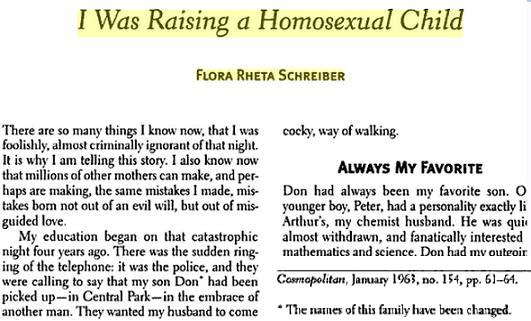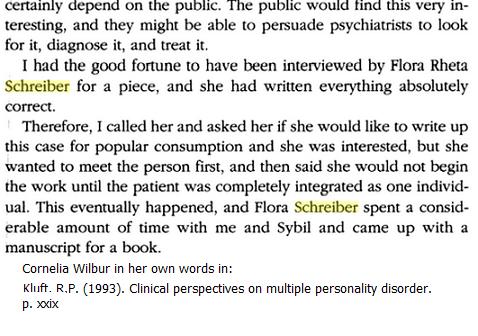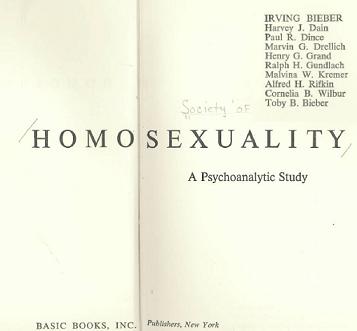Yesterday, I pointed out that most members of the National Association for the Research and Therapy of Homosexuality (NARTH) are not mental health professionals or scientists. Even though the name of the organization promotes research and therapy, three-fourths of the members are not trained or credentialed to do either activity.
Despite the constituency of the group, NARTH is promoted by religiously conservative groups as a scientific organization. One example of this is an appearance in July of this year by NARTH President Julie Hamilton on Washington Watch Weekly, a radio program of the Family Research Council. FRC has taken a lot of heat, from me included, about the information they disseminate about sexual orientation. Some of that criticism should also be directed at the sources of their misinformation. As this interview illustrates, one such source is NARTH.
Tony Perkins sets up the interview by referring to the then current controversy over Marcus Bachmann’s counseling clinic and the allegations that he provides reparative therapy. Then he gets to the interview:
There’s a bigger agenda here. They [gay advocates] want to discredit anything that has to do with Christianity. But there’s something even more troubling here. And what they are doing is that they are trying to discredit a type of therapy that’s based on scientific research and that’s why I’ve invited my next guest to join me. Dr. Julie Hamilton is the President of the National Association for the Research and Therapy of Homosexuality, or NARTH. NARTH is a professional scientific organization that offers hope to those who struggle with unwanted same-sex attraction. They’re not a Christian organization per se, they are focused on the science to help people who want to escape the lifestyle of homosexuality. Dr. Hamilton is also featured by the FRC’s new documentary, The Problem with Same-Sex Marriage and you can find out more about that at FRCRadio.org.
After the introduction, he gets to the bottom line:
Perkins: It’s no surprise to us that faith based counseling is under attack but what does the scientific research say about sexual orientation and an individual’s ability to change it?
Hamilton: The research is clear that people are not simply born gay and that people can change in the area of their sexual orientation.
After some conversation about client self-determination, the interview returns to what research says about change therapy.
Perkins: Now in the wake of this attack on Congresswoman Bachmann and her husband Marcus, we see a number of quote-unquote experts, counselors parade out on cable networks, and I’ve not seen, it’s certainly not a debate, it’s one-sided and they’ve all said, ‘well, all of this type of counseling, the reparative therapy, the idea that people can come out of the lifestyle, that’s been disproven, it’s been rejected and that is harmful and should not be allowed.’
Hamilton: Ok, that’s simply not true. What’s missing from the discussion is what research really reveals. Recently, NARTH releases a landscape survey and an analysis of 125 years of data. So basically we looked back 125 years of case studies, reports and research studies looking to answer the question, is change possible? And what we found is that over the last 125 years, change of sexual orientation has been documented in the scientific literature. And so we know looking at that that for years it has been clear, and even in the recent studies it has been very clear, that people can and do change in the area of behavior as well as attraction. So, and the other thing that we looked at in our landscape review was whether or not change attempts were harmful. And we found very clearly that there is no established report of harm to individuals that therapy tends to be more helpful to people and that it is not a harmful thing. There’s no, and even the American Psychological Association did admit in a report in 2009 that there is not enough evidence to claim that it’s harmful.
There is a lot wrong with Hamilton’s defense of change therapy. First, she glosses over the fact that even the most charitable reading of studies of orientation change find that most participants aren’t successful. Second, she cites the NARTH review which dismisses the flaws in the studies conducted over those 125 years of research. In the NARTH review, George Rekers is cited and we now know the rest of the story about his failed research on gender variance and his own personal issues. The work of William Masters and Virginia Johnson is cited despite the fact that none of Masters’ co-workers have come forward to say they ever saw any of the conversion therapy clients claimed by Masters. Even Masters’ wife and co-author, Virginia Johnson had questions about the existence of the conversion cases.
Some therapists who produced case studies of cure simply made up the cases (e.g., Cornelia Wilbur in collaboration with journalist Flora Schreiber). Many of those old studies were aversive therapy studies where electric shock was used to provide pain in association with same-sex attraction. While some people reported changes, there is very little follow up to find out if they remained changed or simply adapted to the shocks. These methods were discontinued for ethical reasons. NARTH continues to tout studies of approaches no one uses now to bolster their claims. I could go on, but I’ll stop after I note that Hamilton did not mention the studies that find minimal or no change, like the Edification study where the same-sex attracted member of mixed orientation marriages reported no change in attraction on average.
What if NARTH’s representatives disclosed the problems with the research in their public statements? What if they were candid and reported that some of the old studies are flawed to the degree that they cannot be used? What if these representatives disclosed that many of those who report change continue to be attracted to the same sex? Or also mentioned that some studies find no change? What if the differences in results for men and women were disclosed? Or the existence of bisexuality was included in the discussion of what the reported changes mean? What if they reported data from studies discrediting reparative therapy?
Can you imagine a 125-year landscape review of autism or childhood schizophrenia produced in the manner NARTH touts its survey? NARTH reps would be on the radio bringing back cold, distant refrigerator mothers as the cause.
It is possible that groups like the Parents Action League, ACPEDS, and Defend the Family International (Scott Lively) could find some other way to promote their views, but if NARTH was a scientific organization it wouldn’t be NARTH.


